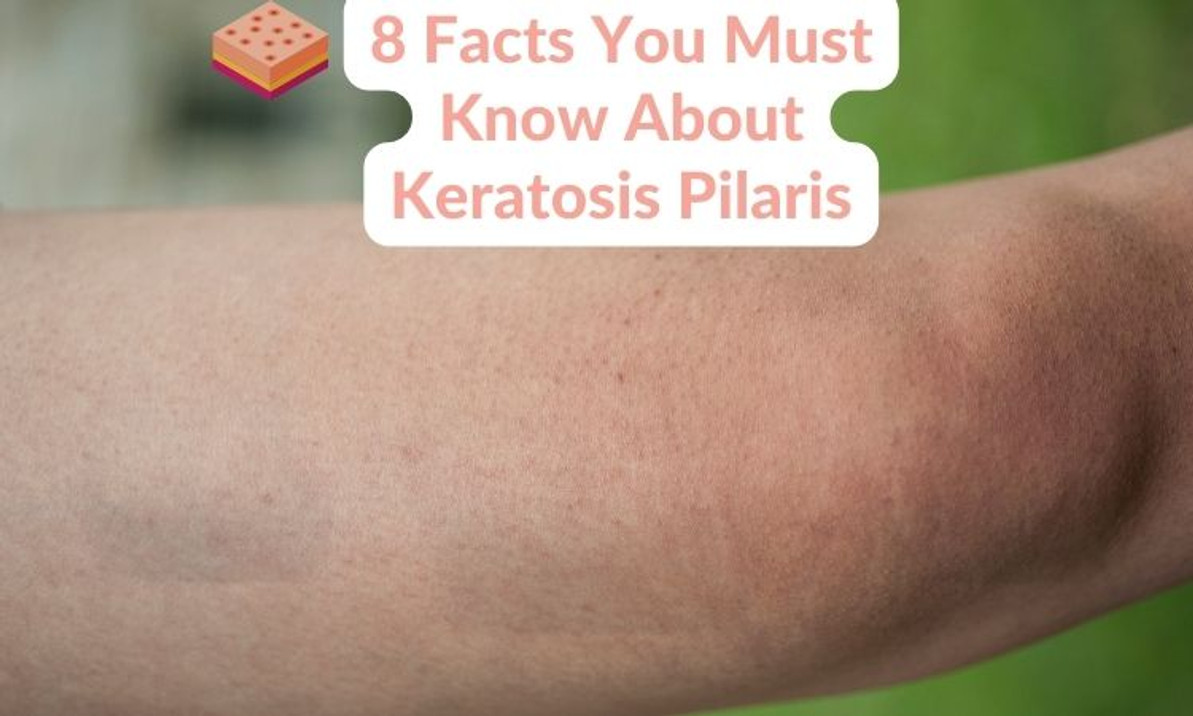8 Facts You Must Know About Keratosis Pilaris
Keratosis pilaris is a common skin concern that's also known as chicken skin, KP, or strawberry skin. Here are eight helpful tips for people who suffer from keratosis pilaris to keep their skin looking healthy and happy.
1. Keratosis pilaris affects half of the world's population.
It is common in children and young adults, but may persist into later age. Fortunately, this tendency improves with age in children.
2. Keratosis pilaris often is on the upper arms and thighs, but it can also appear in other areas.
These small, slightly raised bumps with a sandpaper-like texture are most often seen on the upper arms and thighs. However, they can also appear on the cheeks, back, and buttocks. The palms of your hands and soles of your feet don’t have hair follicles, so keratosis pilaris won’t appear in these areas of your body.
3. If you have keratosis pilaris, it's likely that other people in your family do too.
KP is hereditary, an autosomal dominant gene that is passed down among family members. It can be linked to certain genetic traits, such as lighter skin tone. There is also increased risk for individuals who have certain other skin conditions, such as eczema and asthma; however, it is unclear if these conditions are genetically inherited.
4. The intensity of symptoms often changes with the seasons.
Even though keratosis pilaris is not officially considered a seasonal condition, it usually becomes worse in dry or cold conditions, typically associated in the Fall and Winter months. This is because cold weather breeds dry skin, which in turn seems to irritate keratosis pilaris.
5. Women are slightly more prone to developing KP than men.
Keratosis pilaris (KP) is often within the first decade of life; symptoms particularly intensify during puberty due to hormones.
6. It might not look appealing, but it does not cause any harm.
Its a skin condition that looks like small bumps. If you suspect you have this condition, check for small bumps on your skin around hair follicles. The bumps consist of excess keratin, which is a protein that helps form your hair, nails and skin’s outer layer. Keratosis pilaris bumps may look red, brown or white, or they may look the same color as your skin. They also may look like goose bumps that are consistently seen. It is not contagious nor does it usually uncomfortable.
7. There is no cure for KP, but its symptoms can be minimized.
Since keratosis pilaris is genetically predetermined, it may not be curable but should be controllable. Some treatment examples:
- Over the counter moisturizing products
- Prescribed Topicals
- Exfoliating (Physical or Chemical Exfoliants)
- Laser Treatments
8. Your KP may come back if you stop treating it.
Treatment is all about smoothing away the bumps and calming the inflammation. This is the type of condition that needs ongoing treatment. Your regular routine must include some form of treatment or else it may come back.
Exfoliating Product Recommendations:
Recent Posts
-
Peptides For Skin: Exploring the Anti-Aging Benefits of Peptides in Skincare
Exploring the Anti-Aging Benefits of Peptides in Skincare In the universe of advanced skincare, th …Apr 25th 2024 -
Discover the Perfect Glasses & Styles to Enhance Your Rectangle Face Shape!
Your face shape plays a significant role in determining the most flattering hairstyles and makeup te …Apr 17th 2024 -
Moroccanoil Treatment for Hair: The Ultimate Guide
Moroccanoil Treatment for Hair: The Ultimate Guide In the world of hair care, few products have ca …Apr 1st 2024





